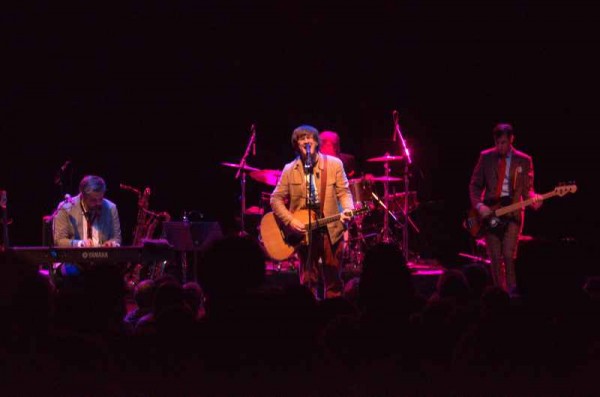 Most bands don’t stay together long enough to last a decade without core members leaving or rotating through. English rock band The Cure avoided that ailment since its formation in the late ’70s until its last album in 2008.During this time, The Cure shape shifted, experimenting in ways that influenced generations of bands in its wake.
Most bands don’t stay together long enough to last a decade without core members leaving or rotating through. English rock band The Cure avoided that ailment since its formation in the late ’70s until its last album in 2008.During this time, The Cure shape shifted, experimenting in ways that influenced generations of bands in its wake.
However, The Cure’s eighth album, Disintegration pinpoints the band’s character. Thematically, Disintegration is Robert Smith’s most ambitious attempt as an artist, which developed his personal style for the rest of his career. Even work as late as Bloodflowers in 2000 screams and bleeds with influence from Disintegration. Created during The Cure’s commercial peak in the late ’80s, the album’s arrival in 1989 made it one of the last proper releases of the decade. It sold three million copies worldwide; more than any other album by The Cure. Part of the inspiration for Disintegration was Robert Smith approaching the “old age” of 30.
He believed that most great rock artists created their magnum opus before they reached that age and could not create a pinnacle work after turning “that old.”
Album opener, “Plainsong” sets the tone and pace for the rest of the album perfectly. Huge walls of synth drenched in distortion combined with slow, beautiful melodies that drip from the guitars then sway through the speakers with reverb. Finishing the mixture, striking drums carry the weight of the song in a way that feels like something between a waltz and a march.
Smith’s dark, quiet vocals bounce and echo across the entire sound with lyrics that evoke a strange desire to lose oneself, succumbing to a completely carefree nature. “Sometimes you make me feel like I’m living at the edge of the world” Smith sings to listeners, transporting them to another universe for the duration of Disintegration.
Most of the album is filled with dark and dreary songs that are depressing. Even the up-beat sounding “Pictures of You” is laced with morose lyrics. An extra layer of depth is added with “Lovesong,” possibly The Cure’s most iconic song next to other titans such as “Just like Heaven” or “Friday I’m in Love.”
Although bands such as the Beatles are often credited with inspiring musicians to cover, or even pick up an instrument for the first time, time and time again, The Cure remains an unsung hero in the recognition regard. “Lovesong” for example is at a level all its own, not because of its immense commercial success, but, more importantly, because of its influence. The list of bands that have covered “Lovesong” (not to mention songs by The Cure in general) is possibly one of the most diverse and extensive around. Bands like 311, A Perfect Circle, and Death Cab for Cutie have all created well-received versions of the track. Currently, Adele’s version on David Letterman is one of the most viewed YouTube results.
At the time, record label Fiction wrongly expected the album to erase any commercial success the band had cultivated. Fiction also nixed the idea that “Lullaby” be released as the album’s first US single, instead opting for “Fascination Street.” Luckily intuition served better this time around, as “Fascination Street” charted at number one for seven consecutive weeks on Billboard’s Moder Rock Tracks chart. “Lullaby,” however, went on to be covered just as much, if not more, than “Lovesong.” The most notable cover coming from Jimmy Page and Robert Plant in 1995 while Page and Plant were touring. The Cure influenced two members of what is widely considered to be one of the most successful, innovative and influential rock groups in history, essentially creating infinite influence.
The Cure – Disintegrationtracklist:
- “Plainsong”
- “Pictures of You”
- “Closedown”
- “Lovesong”
- “Last Dance”
- “Lullaby”
- “Fascination Street”
- “Prayers of Rain”
- “The Same Deep Water as You”
- “Disintegration”
- “Homesick”
- “Untitled”



